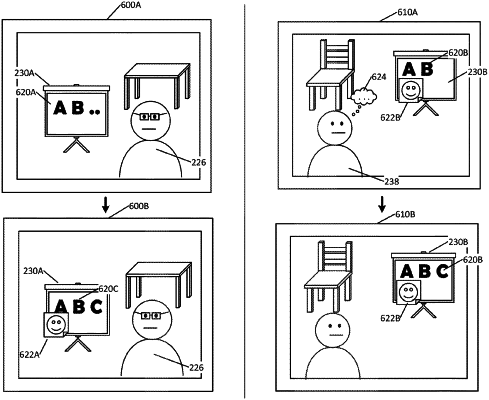| CPC H04L 65/403 (2013.01) [G06T 7/70 (2017.01); G06T 19/006 (2013.01); G06T 2219/024 (2013.01)] | 20 Claims |

|
1. A method for facilitating collaboration in a multiuser communication session, comprising:
providing, at a first device, a representation of a multiuser communication session in which the first device and a second device are active, wherein the representation of the multiuser communication session comprises a virtual object;
synchronizing the representation of the multiuser communication session at the first device with a representation of the multiuser communication session at the second device by providing, to the second device, user state information associated with a pose of a user of the first device and object state information associated with a state of the virtual object at the first device, wherein the virtual object is presented consistently among the first device and the second device in accordance with the synchronization;
detecting, at the first device, initiation of an interaction between the user of the first device and the virtual object, wherein the interaction causes a change in presentation of the virtual object at the first device; and
in accordance with detecting the initiation of the interaction between the user and the virtual object, suspending the synchronization by ceasing to provide, to the second device, the user state information and the object state information, wherein the presentation of the virtual object at the first device and at the second device are inconsistent in accordance with the suspended synchronization.
|